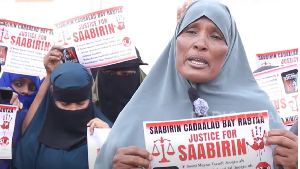“Rice production to reduce by 36 per cent, farmers abandoned their fields due to lack of rains”
A Ghana News Agency Feature by Albert Oppong-Ansah
Tamale, Dec. 30, GNA - Thousands of people in the southern part of Ghana wailed when they lost properties worth several millions of Ghana Cedis and 14 human lives following a seven hour torrential rainfall in October this year.
The devastating flood cut-off electricity and telecommunication supply in many areas and forced the closure of schools and shops in the Accra and Tema metropolitan areas.
When stakeholder met in Accra to find solutions to mitigate the effects of floods, they identified several factors but key among were climate change, and poor land planning as contributing to flooding, especially in the cities.
Northern Ghana, however, did not receive such rainfall, though it needs it badly for cultivation of crops such as rice. Today, the effect of climate change is being felt all over the country, but more especially in the north, which is the food basket of the country.
Cereal farmers in the north and officials of the Ministry of Food and Agriculture at the Upper East and Northern regions at a recent forum on pre-harvest, networking and marketing, testified to the changing climatic condition and the impact on food production.
A visit to major rice producing districts in the Northern Region including West Mamprusi, Karaga, Bimbila, Chereponi, Duuyin and Tolon/Kumbungu sent shivers through the spine as aggrieved farmers threatened to abandoned rice cultivation in the next season.
*Rice Farmers Frustrations*
Mr Maxwell Akandem, 2010 Second National Best Farmer in the Builsa District of the Upper East Region told the Ghana News Agency (GNA) that he could not meet his rice production target for this farming to inadequate rains expected in early August to September 2011.
He said rainfall had been very poor in recent times. “I did not meet my actual target of 1,500 bags as my yield for this season, but I only had 121 bags. Farmers, who had their rice farms around my plantain site, also experienced the same situation”.
“Normally we get the peak rains between August and September but this year’s story is quite different. Some of the farmers due to the drought might get one or two 84 kilogram bag per acre of land even with good agronomic practices describing it as a total failure,” he said
“There are many of the farmers who are ignorant of the existence of the changing weather pattern so it will take some time for them to be abreast with the phenomena and adapt to it,” he said.
Alhaji Naa Von Salifu, a representative of the Ghana Rice Inter-Professional Body (GRIB) and many others had predicted that rice production would reduce looking at the difficulties in the three northern regions.
On how the rice market fell last year, he said, a year ago 84 kilogram bag of rice was sold between GHc18.00 and GHc20, but currently being sold at GHc45.00, an indication that rice supply has fallen.
Alhaji Salifu called on government and civil society organizations to invest in climate change education since it was one of the major reasons that could derail the nation’s quest to produce local rice to ensure food security, reduce extreme hunger and meet the Millennium Development Goal one.
Yakubu Mahama, 40, a farmer in the Demabi community in the Tolon district also agreed and added that he might stop rice cultivation due to the huge sums of money he lost this year.
“I am now thinking of how to raise money to take care of my family and also pay up my loans,” he said.
*Ghana’s Rice Production*
Information gathered from the Ministry of Food and Agriculture (MoFA) indicates that rice production increased about 38 per cent in last four years recording 185,000 in 2007, 302,000 in 2008, 397,000 in 2009 and 492, 000 metric tons in 2010.
The information also shows that rice importation had reduced considerable, about 18 per cent also in the last three years from 540,000 to 359,000 metric tons making the local rice more popular and attractive.
The rise in rice production is attributed to a block farm system by the MoFA four years ago where various regions were given production quota and budget to achieve these targets.
But experts say the national targets of 619,000 metric tons in 2011 representing an expected increase of 26 per cent may not be achieved with the low rains and indiscriminate bush burning which had affected production in the three Northern regions. This is against the back drop that about 71 per cent of the national rice production is from the Northern Ghana.
Mr Joseph Yeng Faalong, Northern Regional Director of MoFA told the GNA that signs of climate change affecting crop production in the three regions in 1983 were written on the walls but was confused to be desertification.
He said the annual precipitation (amount of rain fall) continued to fluctuate becoming unpredictable.
Mr Faalong said available statistics showed that there had been rainfall inconsistency in the region in the past years. The average rain fall figures for 2004 to 2010 were 1243.24, 1066.79, 822.50, 672.61, 829.89 and 865.44, 364.85 millimeters in that order.
“The general agriculture production is based on rain fall so if it does not rain as expected it affects production. This year farmers could not plant early and it is going to affect the rice production this year.
“Our estimate is that there will be a productivity loss of about 36 per cent of the total of the 2011 target of 10,000 hectors of rice,” he said.
The Regional MoFA Director said human activities had affected the soil’s ability to hold water to facilitate plant growth due to continues reduction in carbon.
Mr Faalong said changes in weather conditions present the nation with many developmental challenges which would lead to competition of space between human beings, animal and crop especially as the world population increased to seven billion.
Mr Emmanuel D. Eledi, Upper East Regional Director of MoFA, agreed entirely with sentiments shared by other MoFA officials and indicated that agricultural production in his region this year indicates an overall average of 16 per cent reduction in yield of major crops as compared to last year.
The GNA investigations in the three northern regions showed that field officers over the years had relied on Internet rainfall dates to educate farmers. These forecasts have not been reliable thereby making farmers to lose a great deal.
“Some of the farmers have lost trust in us and doubt our information. For instance when the rains failed this year, they hooted at us,” an agric officer said.
At Pwulugu in the West Mamprusi and Savelugu, rice farms have been abandoned by their owners. The farmers complained there was no moisture for the application of fertilizer and that the rice pods did not have rice in them.
*Climate Change and its Impact*
Mr Abu Idrissu, the Regional Manager of the Environmental Protection Agency (EPA) explains climate change as the seasonal changes over a long period of time due to human activities.
Local activities of our daily hassle including charcoal burning, deforestation, the use of agro-chemicals, fumes from vehicles and heavy industrial activities some 150 years ago have caused the global climatic change.
He said carbon dioxide (CO2) from the combustion of fossil fuels for activities such as transportation or electricity generation is the dominant source of emissions.
The phenomenon affects natural ecosystems, agriculture and food supplies, human health, forestry, water resources and availability, energy use and transportation.
Mr Iddrisu cited torrential rain resulting in devastating floods, excessive drought, scorching sun shine, disease, high temperatures, influx of pest and lowering of water level around the Volta River delta, which provides about 80 per cent of the nation electricity.
He said the disrupting agricultural systems resulting in the heavy lost of farm crops has been predicted to bring famine if measures were not put in place to address them.
The EPA’s recent study on the situation showed that Ghana's temperature could rise by one degree Celsius and rainfall and runoff could sharply reduce the yield of maize, which is a principal food crop in Ghana.
More than half the country subsists on agriculture and cocoa, which is Ghana’s main cash crop – responsible for 25 percent of its Growth Domestic Product.
*Ghana’s Efforts to Climate Change*
Ghana is not a major contributor to green house gasses yet she is one of the hardest hit of climate change effects. The country contributes about 9.6 per cent representing 0.34 tons in 2008 and 2009 to emissions according to the United Nations Framework Convention on Climate Change (UNFCC) recently released.
Ghana joined the global community by signing the UNFCCC in June 1992 in Rio de Janeiro. The Convention entered into force globally on 21 March 1994, and specifically for Ghana on 5 December 1995, three months after Ghana ratified the Convention on 6th September 1995.
At its 25th sitting in November 2002, Ghana’s Parliament passed a resolution to ratify the Kyoto Protocol. The final instrument of ratification was deposited at the United Nations Headquarters in New York in March 2003 thus allowing Ghana to accede to the Kyoto Protocol and hence becoming a Party to it and entered into force globally on 16 February 2005.
KP is a regulation that encouraged member countries reduce carbon emission.
*Conclusion*
The traditional way of determining rainfall pattern no longer works, which calls for a well-resourced meteorological service agency in the country. For local rice production to take it rightful position there was the need to get the issue of weather forecast right.
Some have recommended the establishment of an Agro Meteorological station at MoFA regions to inform officials on rainfall patterns to enable them educates farmers. This was successful when the Florida University piloted a similar project in the north.
Issues of post-harvest losses, poor road network, high cost of agricultural inputs that affects production need to be addressed. In addition irrigation projects should be carried out to reduce reliance on rain.
The recent world summit on Climate Change in Durban South Africa, gave some hope in terms of countries commitment. Climate negotiators made progress in setting up of an advisory body on adaptation and also agreed to the establishment of the Green Climate Fund to aid developing countries.
But Ghana needs to act fast it wants to attain the Millennium Development Goals and adapt and mitigate climate change harsh effect. The signs are visible enough and time is running out.
GNA
NSP/LQ/LQ/LQ
30/Dec/2011
Opinions of Saturday, 31 December 2011
Columnist: Oppong-Ansah, Albert














